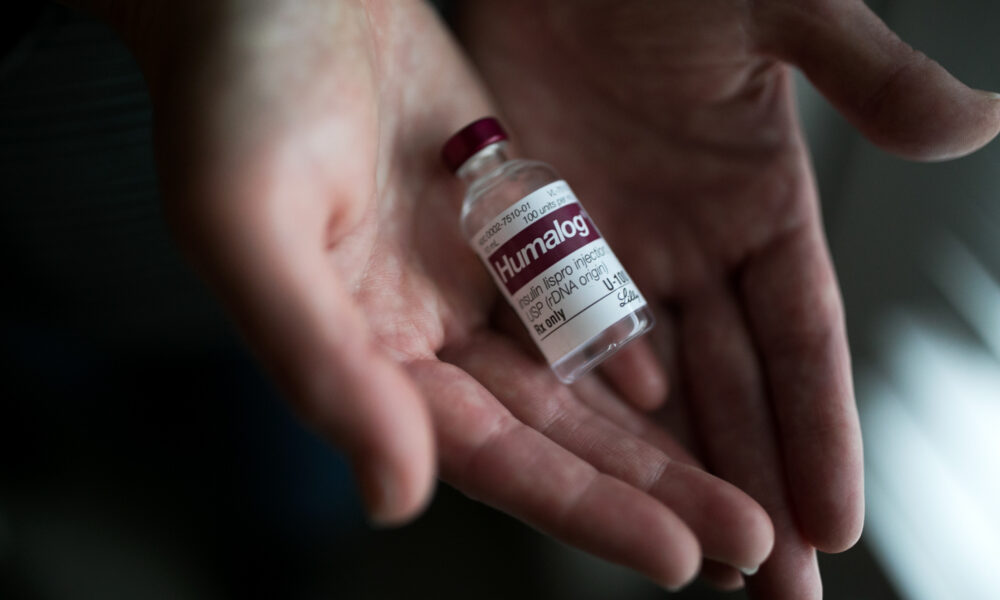What we call insulin today was first manufactured in 1921 by Charles Best and Frederick Banting. The hormone, originally called pancreatic extract, gives those with diabetes a chance at a healthy life, especially the six million people in Canada who live with some form of the disease.
There are three kinds of diabetes: Type 1, type 2, and gestational. Type 1 diabetes, where the body produces minimal quantities of insulin or even none, is an uncommon manifestation, accounting for only five to 10 per cent of patients. Gestational diabetes is the least known and the least common, as it only develops in pregnant women and typically goes away after giving birth.
Type 2 diabetes is the most common iteration of the disease. Around 90 per cent of people with diabetes have type 2, which is caused by insulin resistance—when one’s cells stop responding as efficiently to the insulin produced by the pancreas—resulting in elevated blood sugar. The reason for this resistance isn’t exactly known, but it’s related to certain lifestyle factors, such as being overweight and physically inactive, or genetic factors such as family history.
RESET for REMISSION, a collaborative effort between the McGill University Health Centre (MUHC) and the Diabetes Research Centre in the United Kingdom (DRC), is a study geared toward helping those with type 2 diabetes go into remission, to be launched in 2024. Dr. Kaberi Dasgupta, a professor at McGill’s Faculty of Medicine and the Director of the Centre for Outcomes Research and Evaluation (CORE) at the Research Institute of the MUHC (RI-MUHC) is spearheading this study.
“We’re trying to help people 18-45 years of age go into remission with their type 2 diabetes,” Kaberi said in an interview with The McGill Tribune. “What we’re doing is testing a dietary approach […] but we’re combining it with a supervised exercise strategy. By packaging the two together, we want to tackle not just the blood sugar definition of diabetes, but heart health, liver health, and kidney health.”
Kaberi explained that RESET for REMISSION is looking at heart and liver health because diabetes can lead to issues such as blood vessel damage and fatty liver disease.
Participants of the study will be randomly assigned to an experimental or control group. The experimental group will have their diets and exercise routines modified for the duration of the study, while the control group will be administered standard insulin therapy.
“On top of that, [the participants] will have a dietitian and there’s a regular follow-up and a physician as well,” Kaberi added. “The participants who are in that group, the experimental group, besides the diet, will also go to an exercise centre […] and they basically have a high-level personal trainer, an exercise physiologist.”
Doctors will have to rigorously check a patient’s health to discern the diabetes’ severity prior to and post-study. For example, glycated hemoglobins, also known as A1c, are a form of iron-carrying red blood cell that indicates the presence of sugars like glucose, galactose, and fructose in the bloodstream. It is a crucial measure to monitor in diabetics.
“[At the end of the study] we’re going to look at their […]blood sugar levels […] to see if they’re under 6.5 per cent, which is the threshold for diabetes, and if they’ve been off their blood sugar lowering medications for the three months before [they will be considered in remission],” Kaberi said.
Even if the participants don’t achieve total remission, any degree of insulin regulation may improve their quality of life. If the trials are successful, they will hopefully be a catalyst for the creation of similar programs across Canada.
“The idea is that with [the exercise and diet] they’ll lose weight […] and get rid of their diabetes for a while,” Kaberi said. “It could come back, and they have to be monitored, but, if it works, it means […] less time having diabetes, which means fewer complications.”









